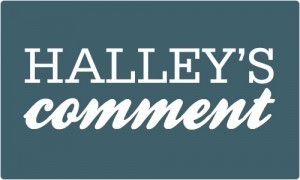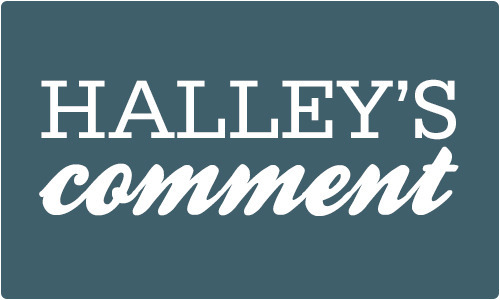Susan Scott's Blog, page 83
July 11, 2014
Fierce Resources: Managing vs. Coaching? In Today’s Workplace, You Really Need Both
This week’s Fierce Resource comes from TLNT.com and was written by Laura Stack.
It’s a difficult choice to choose between managing and coaching, and at times, they are one in the same, and many times they are independent skills that produce differing results. Managing vs. Coaching? In Today’s Workplace, You Really Need Both shares observations about what it means to be a manager and the skill set that is expected.
What skill set do you use to manage your team? Do you use a coaching framework in your daily interactions or do you find yourself going into advice giving mode?
“The combination of mental work, social interaction, project juggling, time management challenges, high pressure, responsibility, and variability makes it among the more demanding types of work any person can take on. The hours are terrible and the stress is inevitable.”
To read the full article, click here.
July 9, 2014
3 Steps to Defining Your Corporate Values
Fierce CEO, Halley Bock, wrote a piece on how to define your corporate values for the Human Capital Institute and we wanted to share it with you. Published Wednesday, July 2nd.
Defining your company’s corporate values can seem like a daunting task given its importance in setting your corporate culture. After all, your culture determines how your employees will achieve all those lofty goals you made. While it isn’t an exercise to be taken lightly, it doesn’t need to be weighed down in process. Follow these 3 steps to uncover your values while fully engaging your team.
Answer 3 Questions. As a warm-up and to get the juices flowing, present your employees with the following 3 questions: Why does {insert your company’s name here} exist? What difference do you want to make here? And, finally, who is your customer(s) and how would you want them to describe their relationship with you? With the company?
Ask them to write down their responses and then report them aloud to the team. Be sure to emphasize there are no right or wrong answers. This exercise provides a wonderful opportunity to re-ground everyone in your mission and vision while introducing differing perspectives on why your company and its employees are essential.
Choose 5 Words. Next, distribute to each person a deck of cards containing 15-20 words. Each word should represent a potential value. Some examples could be: Collaborative, Fun, Innovative, Determined, Passionate. Include a couple of blank ones for people to write in their own. Your instructions should be fairly light. Simply ask that they choose 5 values that they have either already experienced as a strong asset to the existing culture or identify one that is lacking and could effect positive change. Allow 5-10 minutes for this exercise.
For larger groups, an alternative would be to set-up an online survey. There are many free or next-to-free resources available such as Survey Monkey and Poll Everywhere.
Share 1 Story. In tandem with the above or immediately after, ask each person to recall a specific experience at work that illustrates one of his or her values. The powerful act of storytelling cements what is often intangible while galvanizing a team. When everyone has their cards and story prepared, have them stand up and present them. I like to create a large grid with all the values on a whiteboard so folks can clearly see which words are resonating with the group.
There should be a lot of laughter (and maybe a few tears) at this point given the emotions this tends to draw out. If you don’t see any emotions, worry. As a leader, you want your employees to be as emotionally connected with the company as you are. After all, it’s their company too and it is through them that you will be successful.
From here you can craft your final list based on which words dominated. And when you’re ready to share, don’t just put the words up. Create some context around your values and make them your own. As an example, here is what Fierce did with our corporate value of “authentic”.
Be Real. There is no “faking it” at Fierce. We present ourselves, our capabilities, and our knowledge for exactly what it is and we don’t pretend to be anything we are not. We are transparent with each other and our clients and embrace what makes each of us unique.
For a great example of a company who has fully embodied and personalized their values, look no further than Zappos. You can tell they had fun during their process. And so should you!
To learn more about employee engagement, join Halley Bock and the Human Capital Summit for a webinar: Employee Engagement in the 21st Century: Building a Connected and Prosperous Workforce, click here for details.
July 7, 2014
Fierce Tip of the Week: Pay Attention to Your Influence
What effect do you want to have on others when you leave a room or call?
This week, you have the opportunity to infinitely inspire others…or do the opposite.
At Fierce, one of the concepts is to take responsibility for your emotional wake. An emotional wake is what is remembered after you have left a conversation.
It can be an afterglow, aftertaste, or aftermath.
Which one do you choose?
This week’s tip is to pay attention to your emotional wake, so that you are able to tune in and take responsibility for it.
All in all, what effects do you want to have on others this week?
July 4, 2014
Fierce Resources: Independence: Good for Business and Country
This week’s Fierce Resource comes from Inc.com and was written by Curt Richardson.
Independence Day is about appreciating what we have today and about recognizing how we have achieved a multitude of freedoms. Independence: Good for Business and Country reflects on what it means to build a country, team, workforce, or organization and how the idea of independence shapes each organization and the values they hold.
Take a moment to show gratitude for the efforts put forth in the past and assess the initiatives that lie ahead. How can independence support your organizations goals? What will it take to liberate your workforce?
“In business, independence isn’t easy. All companies are beholden to market fluctuations, customer demands and vendor abilities. While we’re dependent on certain forces beyond our control, there are areas that companies can control–who we do business with, what our customer expectations are and how we grow.”
To read the full article, click here.
July 2, 2014
Unplug to Recharge: 3 Tips for a Successful Summer Vacation
Fierce CEO, Halley Bock, is currently writing a column for Business 2 Community. We wanted to share with you her most recent article, published Friday, June 27th.
School’s out for summer leaving corporate hallways nearly as desolate as their high school counterparts, as families and individuals alike break out to enjoy the long summer days ahead. Unfortunately, many will return to the office as depleted, if not more so, than before they left. A survey conducted here at Fierce, Inc. found that 58 percent of workers feel absolutely no reduction in stress from their vacations, and 28 percent return even more stressed. Not exactly the outcome one would hope for.
Here are some tips to ensure this year’s vacation provides ample relief:
1) Communicate Intention. In a society that has adopted a 365/24/7 work-available mindset, it’s important to set clear expectations for how much (or how little!) you will be available during your time out of the office. For a vacation that truly recharges your batteries, communicate to your team, colleagues, and boss that you intend to fully unplug and focus on family. Ensure them that you will have all your ducks in a row should things pop up during your time away. Which brings me to…
2) Delegate Mindfully. Understanding that “the show must go on,” be mindful of the projects, pipelines, and responsibilities currently underway which may need attention while you’re out. Well in advance of your departure, identify team members or colleagues who either have experience with similar opportunities or who have shown aptitude in other areas and an interest in yours. Clearly outline the level of decisions they can make around each item and how you would like those decisions communicated. If no team is available and timeline isn’t an issue, make your vendors and partners aware of your “break,” and when you will be back to pick up work again.
3) Commit Wholeheartedly. As with any plan, success requires commitment and a healthy dose of trust. If you’ve promised yourself, your spouse, or your family that you’ll unplug, THEN DO IT. Sadly, we have become addicted to checking our smartphones because we feel it connects us to the world around us. Meanwhile, the most important connection needing tending to is sitting right in front of you. If it makes you uncomfortable to leave your phone or laptop locked up in a drawer, then all the more reason to re-establish the important relationships in your personal life. Put down your phone and look up.
Bring back the joy of summer vacation by escaping the cubicle and venturing into the unknown where long-lasting memories can be made. Recharge and reinvigorate your energy, passion, and relationships by unplugging and connecting with what’s most important – you and your family.
June 30, 2014
Fierce Tip of the Week: Create a Summer Reading List
The Fierce in the Schools team is at the National Charter Schools Conference in Las Vegas this week. We are collaborating with educators, foundations, and other institutions to brainstorm ways that Fierce can help create authentic and open school cultures. The goal? For students to have the best possible learning experiences.
In the spirit of education and the start of summer, this week’s tip is to create your summer reading list. Whether it is joining a book a club or populating your Kindle for your upcoming vacation, commit to the books you really want to dig into this summer. Ask your friends or colleagues for suggestions.
Some books on my summer reading list are:
- To Sell is Human by Daniel Pink
- Grain Brain by David Perlmutter
- The Power of Habit by Charles Duhigg
- The Book Thief by Markus Zusak
What books are on your list?
June 27, 2014
Fierce Resources: Good Managers Look Beyond Their Usual Suspects
This week’s Fierce Resource comes from HBR.org and was written by Ron Ashkenas.
Good Managers Look Beyond Their “Usual Suspects” challenges leaders and managers to redirect the conversations most commonly had with the “usual suspects” or the people they turn to most and to instead, approach a different individual who may have new insights to share.
This week the marketing team at Fierce came together to discuss Tribes by Seth Godin. One of the big takeaways for our team, regardless of where you sit in the organization, is that you can lead. You may not be leading as the CEO, and you can lead projects that impact the organization in big ways. How will you look beyond the usual suspects? What tools do you have in your toolbox to establish yourself as a leader?
“Take a step back and think about how to expand your talent pool to get the actual results you want. Do a quick mapping of your committees, task forces, and other special assignment groups, to see if you have a “usual suspect” bottleneck. Although individual executives may engage in this dynamic intentionally (like Captain Renault), most do not; it just happens. By sketching out these responsibilities, and looking at them holistically, it’s possible to see whether the same names come up again and again.”
To read the full article, click here.
June 25, 2014
Toxic Employees: To Confront or Not Confront?
Toxic employees (a.k.a., “actively disengaged” employees) remain a significant concern for organizations across the globe. According to Gallup’s 2013 State of the Workplace study, a mere 13 percent of the global workforce is engaged. That leaves 87 percent to the negative side of the spectrum—63 percent being unengaged and 24 percent actively disengaged. While the unengaged are a concern, it is the actively disengaged who pose the largest risk to organizational health. These are the people who are unhappy; unproductive; and make concerted, daily efforts to ensure everyone is clear about their unhappiness. Thus, the well-coined moniker, toxic employee.
In another recent survey performed by Fierce, Inc., the collateral damage created by toxic employees was stated loud and clear. Forty-eight percent of respondents felt that toxic employees decrease morale; 27 percent said they decrease productivity; 17 percent cited an increase in stress; and 8 percent noted increased distractions. That’s a lot of havoc wreaked by this potent little group. And yet, an astounding 78 percent of respondents stated their organizations are “extremely” to “somewhat tolerant” of these negative Neds and Nellies.
So what’s going on here? No organization would knowingly allow these issues to fester because no organization wants to dump millions of dollars down the disposal. There must be another factor at play—we simply don’t know how to deal with toxic employees and/or we aren’t exactly sure what we’re dealing with. To understand what we’re dealing with, it’s best if we get to the root cause of their negativity. Here are some strong possibilities:
Feeling undervalued. No one wants to spend most of his or her waking hours (read: lives) working as a “cog” in a machine. Feeling disposable, commoditized, or not understanding one’s role in the greater cause puts the path to disengagement into hyper-drive.
Lack of recognition. There are fewer more efficient ways to create extreme resentment than asking the best of someone and giving nothing in return, except perhaps a paycheck completely devoid of human qualities. A paycheck is the bare minimum and, in this case, you’ll get exactly what you paid for!
Interpersonal conflict. Holding onto an issue with a colleague, employee, or boss is a bitter pill to swallow. Without tools to tackle the tough conversations, the lowest common denominator tends to prevail, and feelings of helplessness and futility can overwhelm, creating an “if you can’t beat ’em, join ’em” cultural dynamic.
Truth is, most employees come into the workforce with energy to spare and ideas to share. It is typically through an organization’s own deficiencies that their engagement slowly is leeched away. And if voluntary turnover poses too many risks, they will stay within the walls, infecting the culture while doing great damage to productivity. It is up to the organization to make a concerted and deliberate effort toward maintaining the engagement levels of its staff. Here are four ways to address this while also addressing the toxic employee:
Communicate purpose. Too often a company crafts its vision statement only to abandon it in a hallway once the initial “buzz” has worn off. Revisit your vision statement often while communicating to employees in quarterly one-on-ones. How are individuals specifically contributing to fulfilling the vision? Remember to tether each person to the organization’s success, thereby giving him or her a clear sense of purpose.
Create a culture of recognition. Instead of waiting for an annual review in which the “good news and bad news” is shared in one sitting, create moments of recognition every day. Identify at least one individual who is doing great work and tell him or her how they are making a positive contribution. A 2012 Globoforce Motivation Worldwide study found that 81 percent of employees claimed recognition made them more satisfied with their work. Quite an ROI for something that comes at no cost.
Confront behavior. Engender accountability by confronting issues or negative behavior as soon as it arises. Keep in mind that while you may have ideas about why they are acting out and/or strong opinions of their character, you only have your side of the story going into the conversation. Dig a bit to understand what the issue is from their perspective so you an effectively address it. Be clear in pointing out the behavior that needs to change and work together to find a solution. By demonstrating skill around confrontation, you will not only resolve issues but also model how they can address issues with others.
Cut the cord. Recognize the fact that there will always be the few who, for various reasons, are entrenched in a victim mindset and have no plans to move from that position. When you have unsuccessfully tried all else and no amount of “detox” will work, set your organization free and terminate the relationship.
With a combination of good intentions, clear direction, and early detection, any organization can begin the much needed and highly rewarding work of boosting engagement while transforming toxic employees into positive contributors.
This piece was originally posted on Training Magazine. You can read it here.
June 23, 2014
Fierce Tip of the Week: Avoid Giving Advice
Do you love giving advice? Most of us do. It feels good. It can makes us the “go to” person.
The problem is… it isn’t effective.
It is scientifically supported that giving advice is not the best way to help people solve their problems.
Work by David Rock at the NeuroLeadership Institute shares that for insights to be useful and to create behavior change, they need to be generated from within – not given to individuals. In other words, people need to answer questions and work through the problem themselves in order to create new pathways in their brains.
If self-generated insights don’t happen, behavior most likely will not change.
This week’s tip is to pay attention to when you want to give advice and ask questions instead.
Do you give advice often? What tips do you have to stop?
June 20, 2014
Fierce Resources: Arianna Huffington on Why Entrepreneurs Make Bad Decisions
This week’s Fierce Resource comes from Inc.com and was written by Graham Winfrey.
Arianna Huffington on Why Entrepreneurs Make Bad Decisions introduces a series of video tips from her book, “Thrive: The Third Metric to Redefining Success and Creating a Life of Well-Being, Wisdom, and Wonder”. Arianna explores reasons why entrepreneurs make bad decisions and what it takes to avoid burn out and thrive in an era where we can stay plugged in 24/7.
So what does it take to make good decisions and be successful? Flexibility and a willingness to be nimble – you don’t know what you don’t know. Strength in team building and finding diverse perspectives to challenge your common beliefs. And the ability to collaborate often.
A significant fourth? Believing in yourself and being okay with failing along the way. We never intend to set ourselves up for failure, and at the same time, failure can be a strong impetus for change.
“Don’t be afraid of failing. Fail fast, fail often, and move on.”- Arianna Huffington
To watch tips from Arianna Huffington, click here.
Susan Scott's Blog
- Susan Scott's profile
- 861 followers













